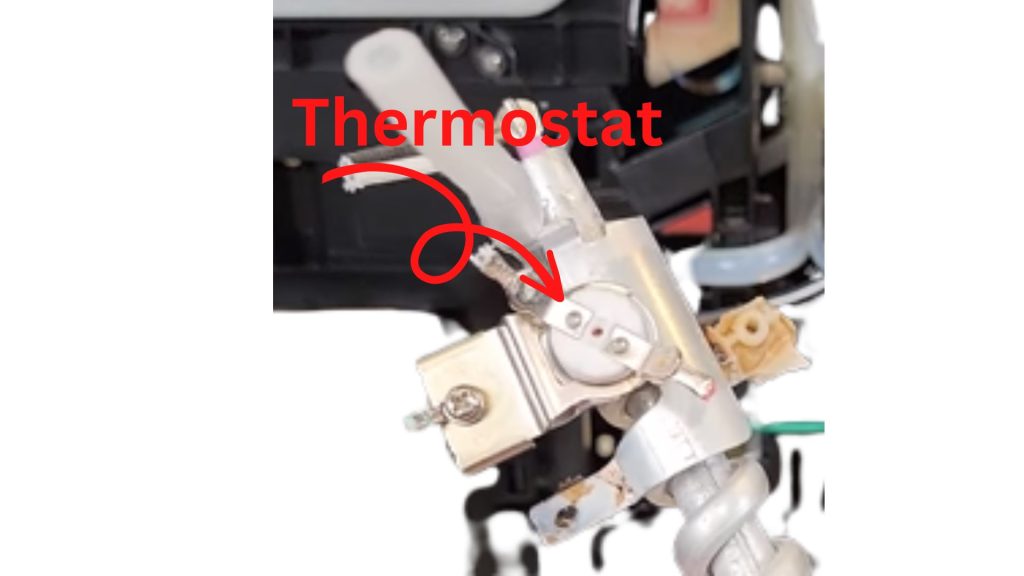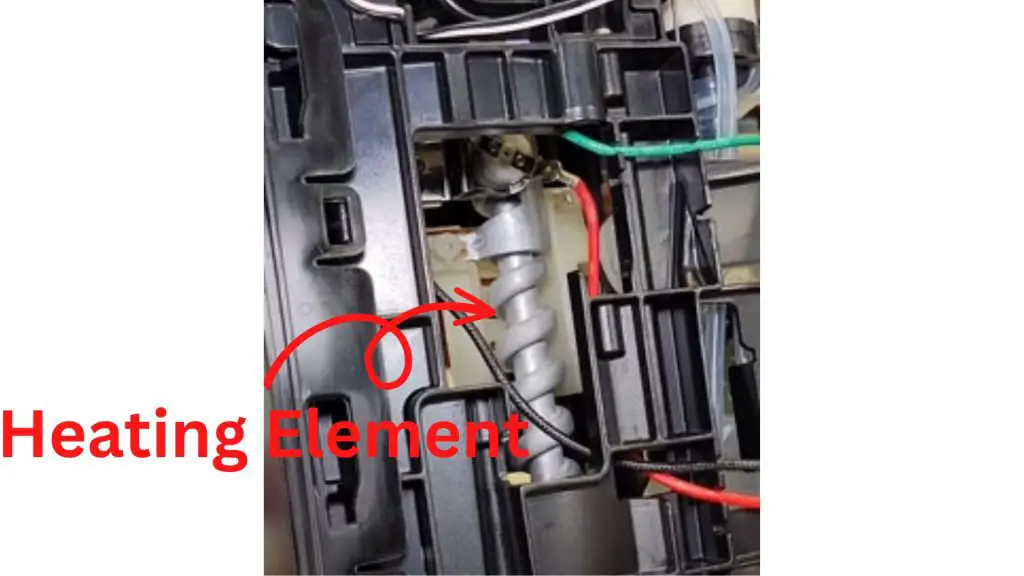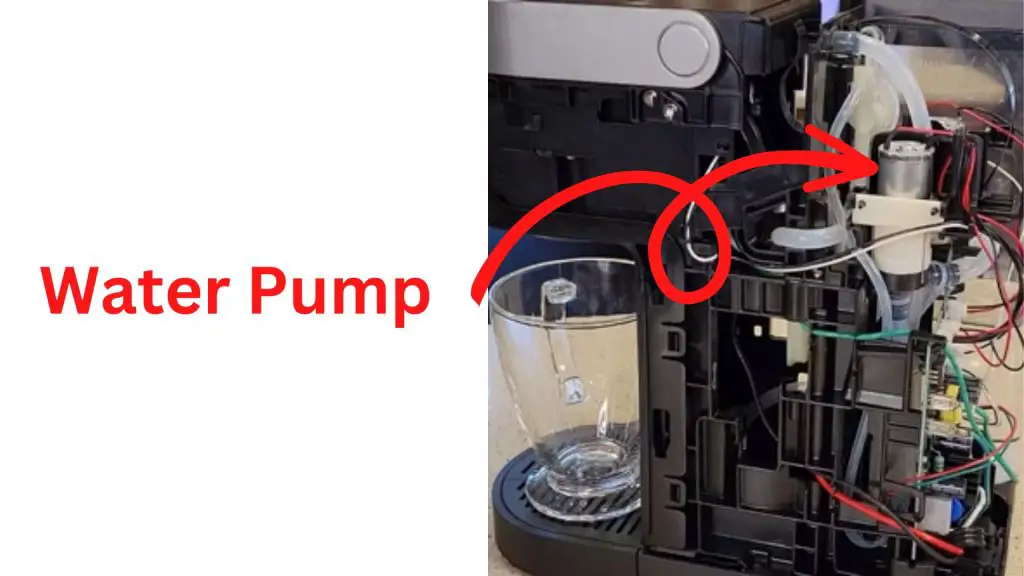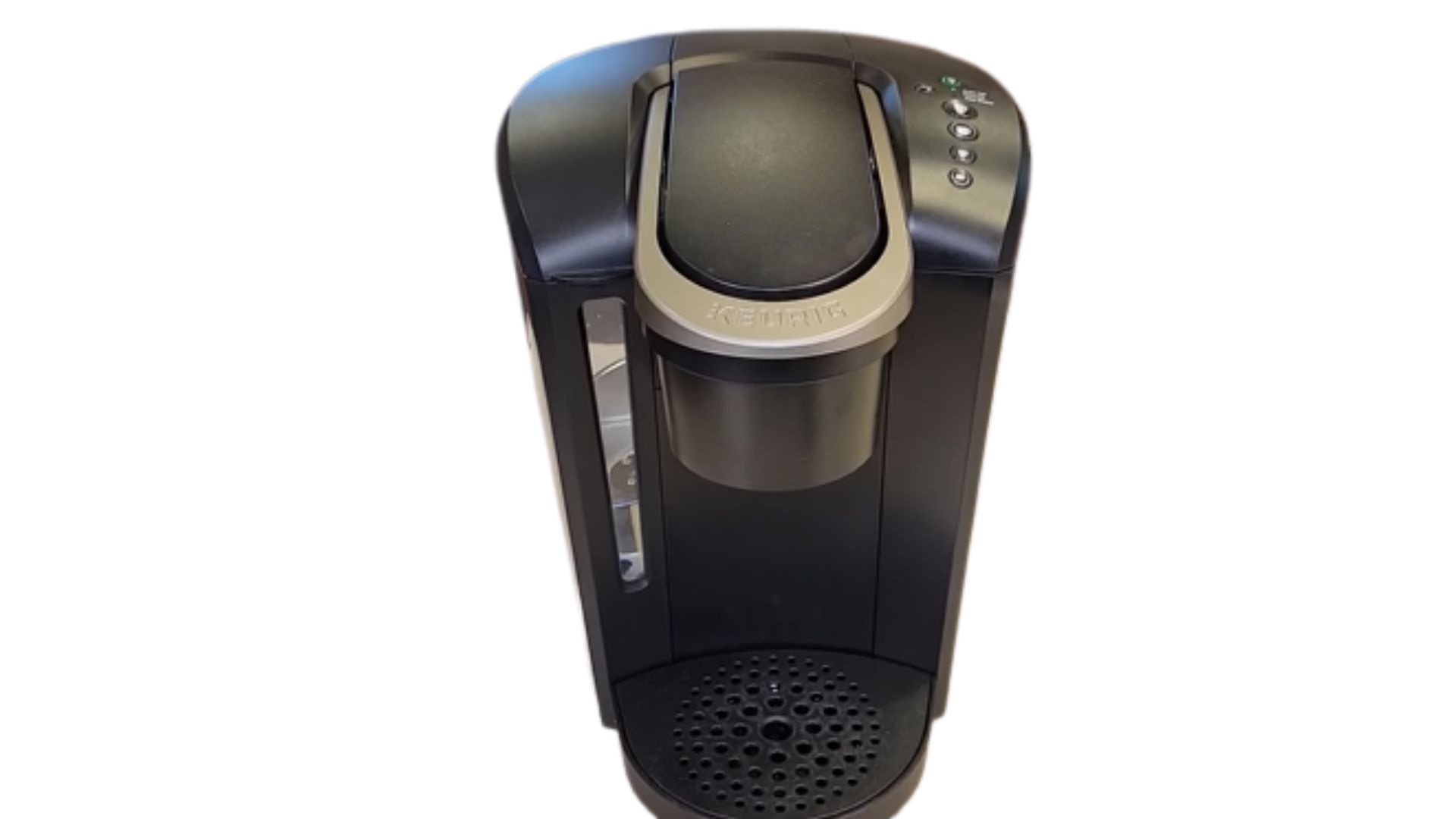Coffee makers heat the water. They will raise the temperature to the boiling point. According to Aquaspresso, your coffee comes out at 80 degrees, but that figure falls to 60 degrees once you extract the beverage into a cup and add milk.
A coffee maker that can’t heat the water is useless to you. But don’t be so quick to throw it away. You can solve this problem if you identify the cause. Potential culprits include:
1). Defective Thermostat

The thermostat should be your first consideration because it controls the machine’s ability to heat the water. The thermostat determines the amount of heat the element produces. It will also stop the heating element once the device reaches the correct temperature.
A defective thermostat will prevent the coffee maker from heating the water. The same problem can occur if the thermostat gets stuck in the off position. Some thermostats are defective from the start.
2). Defective Control Board
If you’ve ruled out the thermostat, turn your attention to the control board. Control boards can develop electronic glitches that produce unexpected consequences, such as a Keurig that won’t heat.
However, you typically eliminate glitches by performing a reset. What happens when the reset fails to solve the problem? The control board is defective. Don’t be surprised if the machine stops working.
The control board runs the Keurig. Every feature and function may suffer if the board stops working.
3). Blown Fuse
When people rule out the control board and thermostat, they immediately blame the heating elements. However, you should check the fuse before taking drastic action. The thermal fuse performs a similar function to the electrical fuse.
The electrical fuse blows when the flowing current spikes, cutting the power and protecting your appliances. The thermal fuse responds to heat. It takes action when the heating element overheats.
A broken fuse is a good thing because it keeps the device safe. It won’t allow the heating element to work when temperatures have crossed a dangerous threshold. However, you shouldn’t replace the thermal fuse without discovering why the Keurig overheated. Otherwise, the same problem will occur down the line.
4). Dead Heating Element

Coffee makers generate hot coffee by pulling water from the reservoir and passing it over a heating element. The heating element boils the water rapidly, allowing the coffee maker to quickly deliver a hot cup of coffee.
Additionally, the heating element will keep the coffee at the appropriate drinking temperature. The Keurig cannot make hot coffee when the heating elements fail. If the coffee is warm at the start but it never maintains the ideal drinking temperature, the warming element is dead, probably because you shorted it out by spilling brewed coffee on it.
5). High Altitude Setting
The thermostat can lower the temperature because you selected the high altitude setting. According to the Food Safety And Inspection Service (U.S. Department of Agriculture), increasing the altitude lowers atmospheric pressure.
As a result, water will boil at a lower temperature. The boiling point of water is 212 degrees F at sea level. It falls by less than 1 degree F whenever you increase the elevation by 500 feet. Manufacturers know this, so they include a setting allowing the coffee maker to boil water at a lower temperature.
You can still make coffee at a higher altitude without this setting. But activating it will help you save energy. But high altitude mode cuts the power to the heating element earlier than usual. Therefore, using this setting at a lower altitude will prevent the Keurig device from raising the temperature to the appropriate level.
Not all Keurig systems offer this feature. You will only find the setting in specific models, such as the K2.0. Therefore, don’t blame your coffee maker’s temperature problems on the high altitude mode until you check the manual. Make sure your machine has this setting.
6). Worn Out Wires
The heating elements require a reliable power source. They can’t get the power they need when the machine’s connections are loose or broken. You need an expert to look for worn-out or damaged wires.
7). Clogged Water Pump

The heating element shuts off when water stops pumping through the brewer. The goal is to prevent the machine from overheating. Water pumps can become clogged because of mineral buildup and dirt.
How To Fix Keurig That Is Not Heating Water?
Keurig Support has provided a list of instructions for consumers to follow when their coffee maker refuses to heat. They include:
- Press the power button to turn the brewer off. This resets the machine.
- Place a mug on the drip tray and use it to empty the hot water tank. You can do this by holding the ‘BREW’ button down until the water pours into the mug. Make sure the brewer is off before you proceed. But you can keep it plugged into an outlet.
- Turn the device on and add water to the cold water reservoir.
Keurig expects these steps to solve the problem. But what if they don’t? You can deploy the following solutions:
1). Is The Thermostat Working?
You can test it to confirm. This means turning the unit over and using a screwdriver to access the thermostat. Naturally, you need to empty the water in the reservoir before proceeding.
Test for continuity using a multimeter. If the thermostat is defective, replace it. Ask Keurig to recommend a suitable replacement. You don’t want to replace a faulty thermostat with a sketchy item that won’t stand the test of time. While you’re at it, you should also find, test, and replace a dead thermal fuse.
2). Check The Heating Element
If the thermostat passes the test, check the heating element. Use a multimeter to test the component for continuity. If the heating element is dead, replace it. You don’t fix heating elements.
Some technicians may offer to do so, but the safer option is to get a replacement. Naturally, a layperson cannot do this. While the process is actually straightforward (depending on the model), don’t open the coffee maker unless you have the relevant technical expertise.
3). Deactivate High Altitude Mode
Check the manual to determine whether or not the device has this setting. The manual will also tell you how to turn this setting off. High altitude mode is only problematic if you use it at a lower altitude.
Keep it on at a high altitude. It is worth noting that a glitch can cause the coffee machine to get stuck in high-altitude mode. Therefore, you need to solve the glitch to eliminate this setting. Otherwise, it will remain active.
4). Make Sure The Keurig Machine Has A Reliable Power Supply
Is the plug loose in the outlet? Is the outlet faulty? Did the circuit breaker trip? You should identify and resolve these issues before you hire a technician.
The technician is only necessary when loose connections and damaged wires are to blame. A technician can take the machine apart to find and resolve these problems. Otherwise, many laypeople can replace faulty plugs and outlets without additional help.
5). Descaling
Don’t add hot water to the coffee maker because it has dissolved minerals and debris from the water heater that cause clogging. However, cold water can also cause mineral buildup.
Try to descale the Keurig coffee maker every few months. Use a white vinegar solution to clean a machine with a scaling problem.
6). Replace Damaged Pump
I want you to hold the brew button for five seconds to maximize the pump’s power forcefully. This assumes that you resolved the clogging problem. Some water pumps are too damaged for you to fix. Replacing them is the only viable option.
7). Fix Control Board
Some defective control boards can be fixed. Others require replacement. A technician will tell you your options.
Related post:

